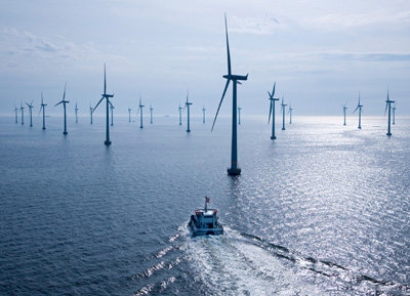
BOEM’s DEIS for the proposed Ocean Wind 1 Offshore Wind Farm analyses the potential environmental impacts of the proposed action described in Ocean Wind’s project plan for constructing and operating an offshore wind energy facility. This is the first DEIS published by this Administration for an offshore wind energy project.
The Notice of Availability for the DEIS will publish in the Federal Register on June 24, opening a 45-day public comment period, which ends on August 8. During the comment period, BOEM will conduct three virtual public meetings and accept comments on the DEIS. The input received via this process will inform preparation of the Final EIS.
“BOEM remains committed to an environmental review process that establishes a strong foundation for offshore wind projects in the US while promoting ocean co-use and avoiding or reducing potential conflicts” said BOEM Director Amanda Lefton. “The feedback provided by ocean users and our many stakeholders will help inform the Final EIS and provide invaluable insight to decision makers.”
Over the past year, the Biden-Harris administration and the Interior Department have launched the American offshore wind industry by approving and celebrating the ground-breaking of the nation’s first two commercial-scale offshore wind projects in federal waters. The Department also announced plans to potentially hold up to seven new offshore lease sales by 2025, including the record-breaking New York Bight auction and Carolina Long Bay auction held earlier this year. BOEM also expects to complete the review of at least 16 plans to construct and operate commercial, offshore wind energy facilities by 2025, which would represent more than 22 GW of clean energy for the nation.
Ocean Wind proposes to construct up to 98 wind turbines generators (WTGs) and up to three offshore substations within the lease area, located 15 statute miles southeast of Atlantic City, New Jersey, with export cables making landfall in Ocean County and Cape May County, New Jersey. If all 98 WTGs are approved for installation, the estimated capacity range will be from 1,215 to 1,440 megawatts, capable of powering up to 504,000 homes per year.
BOEM will use the findings of the EIS to inform its decision on whether to approve Ocean Wind’s proposed project.
During the comment period, BOEM will hold three virtual public meetings, where the public can learn more about: the review process, the EIS schedule, potential impacts from the proposed project, and proposals to reduce potential impacts. There will also be an opportunity for participants to provide comments on the DEIS.
A virtual meeting room, information about how to register for the virtual meetings and instructions for how to submit comments will be published on BOEM’s website on June 24, 2022.
The virtual meeting room will be available throughout the 45-day comment period and will include a copy of the DEIS, fact sheets, posters, and pre-recorded presentations.
“ACP applauds BOEM for advancing US offshore wind with the publication of its Draft Environmental Impact Statement (EIS) for the Ocean Wind 1 project, the first released under the Biden Administration” said Josh Kaplowitz, VP of Offshore Wind at the American Clean Power Association (ACP). “Offshore wind farms are some of the most carefully scrutinised infrastructure projects in the country, not just in terms of environmental and socio-economic effects, but also in terms of the substantial climate and jobs benefits that their construction and operation bring. Projects like Ocean Wind are critical to deliver the clean energy customers and businesses want. The 1,100 MW New Jersey project, jointly developed by Ørsted and Public Service Enterprise Group (PSE&G), would power over 500,000 homes per year. Harnessing America’s offshore wind resources creates an entirely new domestic source of energy, much-needed American jobs, new supply chain and manufacturing opportunities – all while delivering reliable, clean energy to more Americans. We thank BOEM for their continued focus on growing offshore wind in the United States and the numerous economic and environmental benefits it will bring to our nation.”
For additional information:

